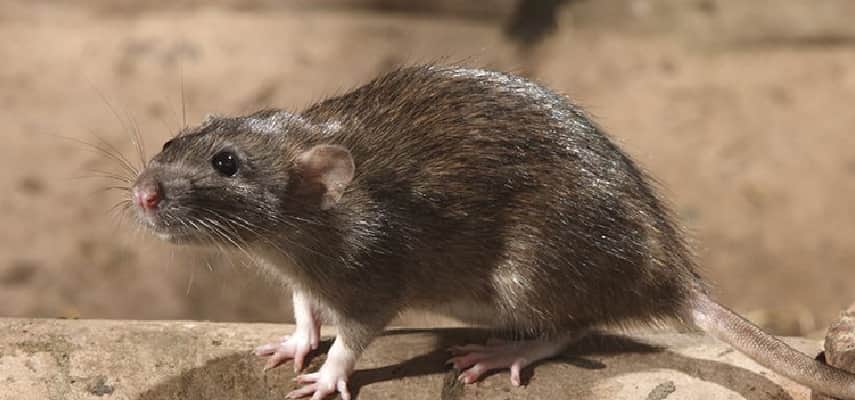The Norway Rat is also known as the Rattus Norvegicus and is the largest rat in Australia. Norway rats are one of the most common types of rats in Australia. They are also known as brown rats, house rats, or wharf rats. These rodents are named after Norway because they were first introduced to Australia by Norwegian settlers in the 17th century.

Norway rat is a rodent that belongs to the Muridae family and lives in areas close to human populations. This includes urban areas where they can find food and shelter easily. The largest population of Norway rats is found in the United States where it is estimated that about 50% of households have these rodents living inside their homes. Norway Rats are commonly found in the United States.
They are brown and have long tails with black tips. Norway rats live in urban areas, rural areas, and agricultural settings. They can be found from coast to coast, but they thrive best in damp climates with heavy vegetation. Norway rats typically live near humans because of their food source – garbage, pet food, and crops grown near houses or barns. Furthermore, it is possible that they cause damage to your property and home stuff. To get rid of them, call professionals of Rodent Control Today.
The Appearance Of A Norway Rats
Norway rats are the most common rat in Australia and can be eliminated easily by only Professional Rodent Controllers. They are mostly found in urban areas and near farms. Norway rats are brownish grey in colour, with a long tail, 3-4 inches, but may be up to 18 inches long including its tail and have a body length of about 7-10 inches (18-25 cm) and weigh about 1/2 to 1 pound (230 to 450 g). They have small ears and pointed noses. The Norway rat (or brown rat) is the second largest of all rodents next to the Capybara. It is also known as the “sewer rat” because of its association with unsanitary living conditions and sewage treatment plants.
Norway rats have brown fur that becomes lighter as they age. They also have large incisors that grow continuously throughout their lives. The average lifespan of a Norway rat is one year, but it can live up to three years in the wild or up to five years in captivity. If they are bothering you, call us for Professional Rodent Control Services.
Norway Rat Nesting Behaviour
Norway rats are typically nocturnal and will nest in dark, secluded areas. Norway rats will create a nest to sleep in. These nests are often made from shredded materials such as paper, cloth, or insulation from the walls. Norway rats will also create nests for their young and for their food. Norway rat nesting is quite common in residential homes.
But, no need to worry as Rodent Control Today company is here to help everyone who is dealing with Norway rats or other rodent issues. Rodents can also be found nesting in a variety of places including attics, basements, crawl spaces, garages, and sheds. So, if you find them, call us for professional help. Our Expert Rodent Exterminators will provide the best rodent removal solution.
How To Check About Norway Rat Infestation in Your Home
Norway rats are also the most common rat pest in homes, restaurants, and other buildings. They have adapted to living in urban areas and can be found in a variety of habitats, including vacant lots, city parks, and houses.
- Droppings and Urine: The presence of Norway rats is usually indicated by their droppings or tracks. The droppings are dark brown or black and dry looking with pointed ends.
- Tracks: Tracks can be seen as trails of small round holes that the rats make as they run across a surface.
- Gnawed Objects: Norway rats will chew on just about anything but prefer to eat plants, fruits, nuts, seeds, and grains – especially things like corn cobs and bird seed. They may also chew through walls or floors to get into your home if there is a way for them to get inside your house. To detect them, you can notice their gnawed marks on the objects.
- Hidden places: Norway rats are known for living in sewers, basements, and other dark spaces where they can find water supplies such as leaky pipes or open drains. So, always check hidden places when you doubt that there is a Norway rat infestation.
- Foul smell: If you are smelling something that smells like a rat, it can be hard to pinpoint the source. Rats have a very distinctive smell that is often associated with their urine and feces. The odour can be strong enough to make you gag, and it can linger for days. It is important to get rid of this problem as soon as possible because rats carry diseases and they will make your home an unsafe environment.
- Sighting in winter: A rat’s fur is not as thick as a mouse’s, and they are more sensitive to temperature change. Rats will try to find places that are warmer during the winter, like under a car in an open garage. They will also look for dark places where the sun doesn’t shine, like underneath piles of wood or debris.
To solve all Norway rat removal problems, you should call us at Rodent Control Today. The professionals of this company definitely make your home rat free with professional tricks and strategies.
